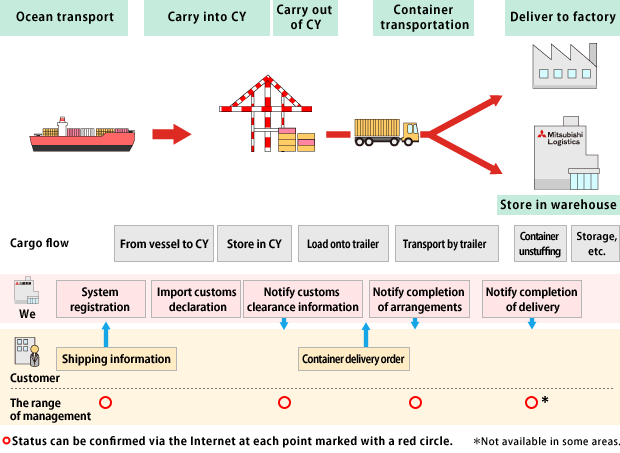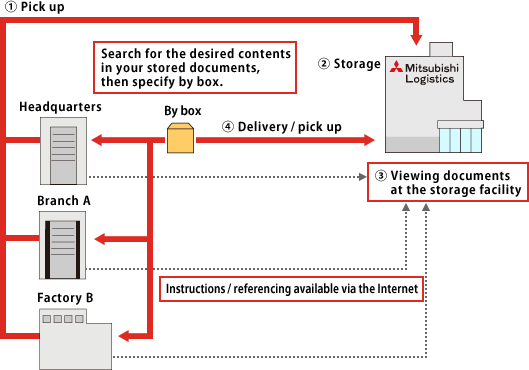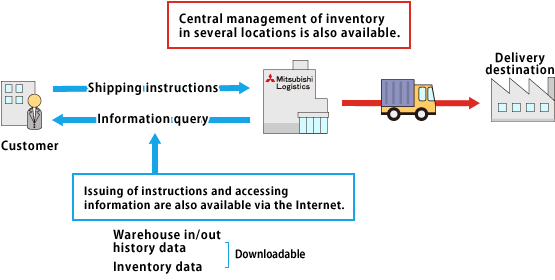Logistics information system
Examples of the use of information systems in logistics services
International transportation and import/export systems

NACCS (Nippon Automated Cargo and Port Consolidated System) is linked with forwarding systems that gather all functions necessary for NVOCC work, from the issuance of S/I, B/L, and A/N for air and ocean cargo to billing and payments.
It is also linked with import/export and custom clearance systems, allowing customers to check information about cargo and track transportation status online, according to their needs.
Warehouse Management System (WMS) & Distribution Center Management System (DCMS) and related systems
We support systems for storage management at warehouse/distribution centers, classification by transportation direction, and transportation by optimal means.
Shipment orders received online from customers via EDI, etc. are directly imported into the systems and handled accurately and promptly.
We also use systems such as pharmaceuticals and other special goods, to provide services for variety of items.
Storage & management system for documents and recording media

This is an online system for the comprehensive management of documents and recording media. Requests for delivery and retrieval of documents stored in boxes and other units, to search contents, management retention periods, and disposal instructions can be made online.
We will notify customers of document that are approaching the end of their retention period at a pre-determined time.
Online inventory information management system

This system allows customers to check product inventory information and make shipping orders online.
Monthly inventory and shipment data by item can be downloaded to reduce the burden on customers' logistics operations.
They can also manage import goods by customs status (cleared, uncleared).
Online cargo inventory management system
Customers can use this online system to check the arrival status of goods shipped from warehouse/delivery centers.
It is possible to check on individual delivery vehicles.